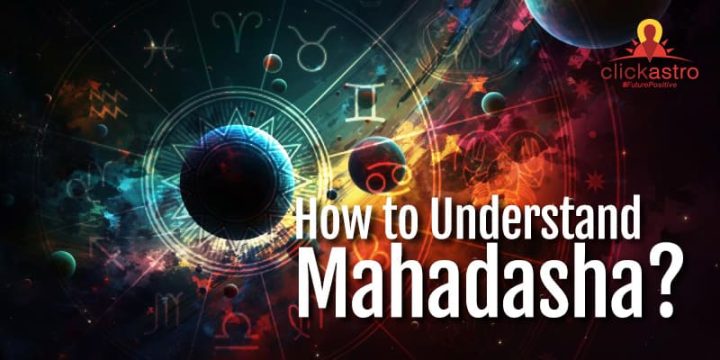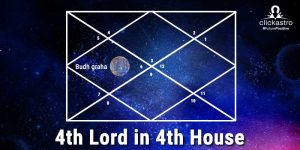Vedic astrology is intriguing and complex, but it provides insights about our lives and purposes. Although it is considered a pseudoscience,
Vedic astrology has proven accurate through in-depth studies. Some features of Vedic astrology include nakshatras, yogas, and mahadashas. Mahadasha, a unique concept in Vedic astrology, indicates the timing of events in our lives. People are curious about the timing of events such as job, marriage, childbirth, and more, and no other branch of astrology can provide a more accurate timing of events than Vedic astrology.
In Vedic astrology, there are
twenty-seven nakshatras, each ruled by a specific planet. Nine planets or grahas rule each nakshatra. Nakshatras are called the wives of the Moon, and the Moon stays in a nakshatra for 2.5 days. At birth, the Moon is in a particular nakshatra, and the planet that rules that nakshatra decides the first dasha of the Jataka. For example, if the Moon is in
Krittika nakshatra at birth, the first dasha will be the Sun dasha because the Sun rules Krittika.
Read more about Kundali Dasha
The Sequence of the 9 Planets
In Vedic astrology, each of the nine planets has its own Mahadasha, and the duration of the dasha for each planet differs. The Mahadasha follows a specific sequence, and the Ketu Mahadasha is the first. According to Sage Parasara, while the nakshatra lord rules the first dasha in a person’s life, the actual sequence of Mahadasha starts with Ketu dasha. After Ketu, the sequence is Venus, the Sun, the Moon, Mars, Rahu, Jupiter, Saturn, and Mercury. If the first dasha begins with the Sun, the second will be the Moon, then Mars, Rahu, Jupiter, Saturn, and Mercury.
How to Understand Dasha?
The Duration of Mahadasha
- Ketu – 7 Years
- Venus – 20 Years
- Sun – 6 Years
- Moon – 10 Years
- Mars – 7 Years
- Rahu – 18 Years
- Jupiter – 16 Years
- Saturn – 19 Years
- Mercury – 17 Years
The Sub Periods
Each Mahadasha is further divided into sub-periods called Antar-dasha or Bukthi, which are associated with specific planets and their influences. Not only are there antar dashas, but there are also further divisions named sookshama dasha and prana dasha. Therefore, there are nine mahadasha, nine antardasha, nine sookshma dasha, and nine pranadasha.
The Rulers of each Rashi
Mahadasha is a Sanskrit word meaning “major period,” referring to a cycle of planetary influence that lasts for a specific number of years depending on the planet that rules the Mahadasha. In astrology, all planets except Rahu and Ketu rule each sign. The Sun rules Leo, the Moon rules Cancer, and Mars rules two signs: Aries and Scorpio. Mercury rules Gemini and Virgo, Venus rules Taurus and Libra,
Jupiter rules Sagittarius and Pisces, and Saturn rules Capricorn and Aquarius. These planets rule each house too. Rahu and Ketu do not rule any house, but they acquire the qualities of the ruler of the house where Rahu and Ketu are present.
Ketu Dasha
Suppose Ketu is in the second house; the matters of the second house will be activated. Ketu indicates detachment and isolation and is also known as moksha karaka. It is a headless planet, so during this dasha, the Jataka may tend to make wrong decisions regarding money. The second house is also known as maraka bhava or the death-inflicting house, but Ketu will detach the Jataka from all physical issues. At the same time, Ketu will make the Jataka speak about spiritual matters as the second house indicates speech.
Venus Dasha
During Venus’s dasha, the attributes of Venus will become active. Venus indicates love, marriage, money, and beauty. So this dasha will add all of these things to the Jataka’s life. Everyone will experience these aspects. Singles may be able to get married as Venus is also an indicator of relationships. During the Venus Mahadasha, creative abilities may be heightened, and the Jatakas may be able to promote their creative talents.
Sun Dasha
During Sun Dasha, the Jatakas will be able to elevate their image in society. The Sun indicates government, power, and authority, so the Jataka may become more powerful. During this period, a person can achieve great success in their career and personal life, as the Sun provides energy, confidence, and the ability to lead, thus gaining more power in society. The Sun also indicates the father, so father figures will have more prominence during the Sun dasha.
Moon dasha
During Moon dasha, the attributes of the Moon will combine with the house where the Moon is placed. The Moon indicates home, comfort, motherhood, and feelings. So during this dasha, the Jataka may buy a home or make real estate deals. Mother figures may also have more prominence.
Mars dasha
During the Mars dasha, the Jataka will focus on health. There may be competitive events during this dasha. During the Mars Mahadasha, a person’s energy levels may increase, and the Jataka may become very ambitious. This period can be a time to take action, pursue goals, and overcome obstacles with courage and determination.
Rahu dasha
Rahu indicates foreigners, advanced technology, and foreign travel, so during the Rahu dasha, the Jataka may travel abroad or have foreign collaborations. The Jataka may also learn new technologies.
Jupiter dasha
In the Jupiter dasha, the Jataka will have the zeal to learn new things. Jupiter indicates higher studies, so the Jataka may get opportunities to study more. For women, Jupiter indicates a husband, so females may have the chance to get married too.
Saturn dasha
In the Saturn dasha, the Jataka may experience some blocks, as Saturn is the planet for delays and restrictions. So the Jataka will have to be very careful with their strategies. Saturn always delays, but it never denies anything.
Shani MahaDasha: Effects and Remedies
Mercury dasha
During the Mercury Dasha, the Jataka may like to have short travels, teach, and preach. Mercury also indicates studies, so the Jataka may be interested in studying.
The full result will depend on the placement, aspect, and conjunct. If some of the planets give yoga, then these yogas will flourish during the dasha of that particular planet.







